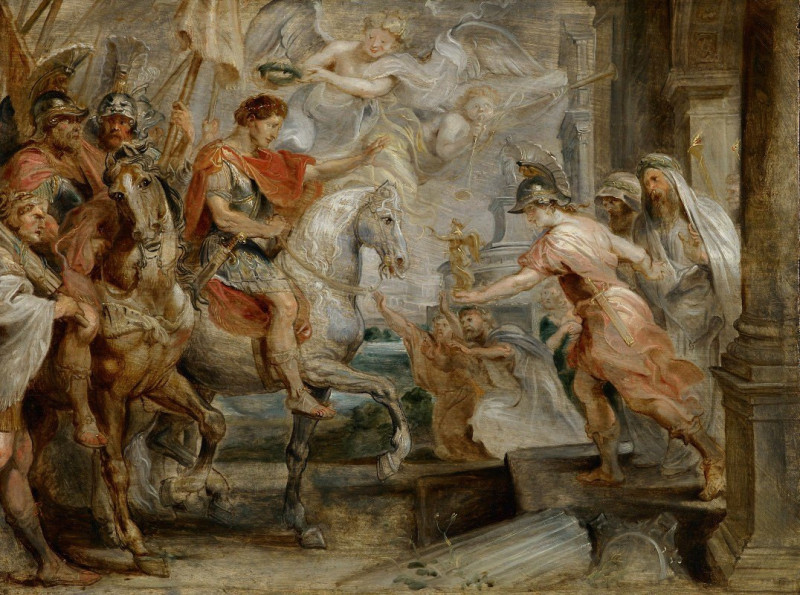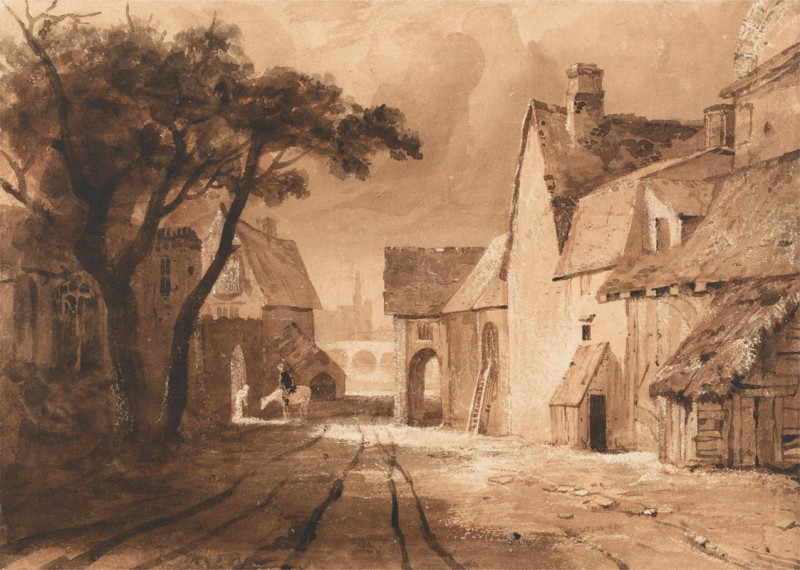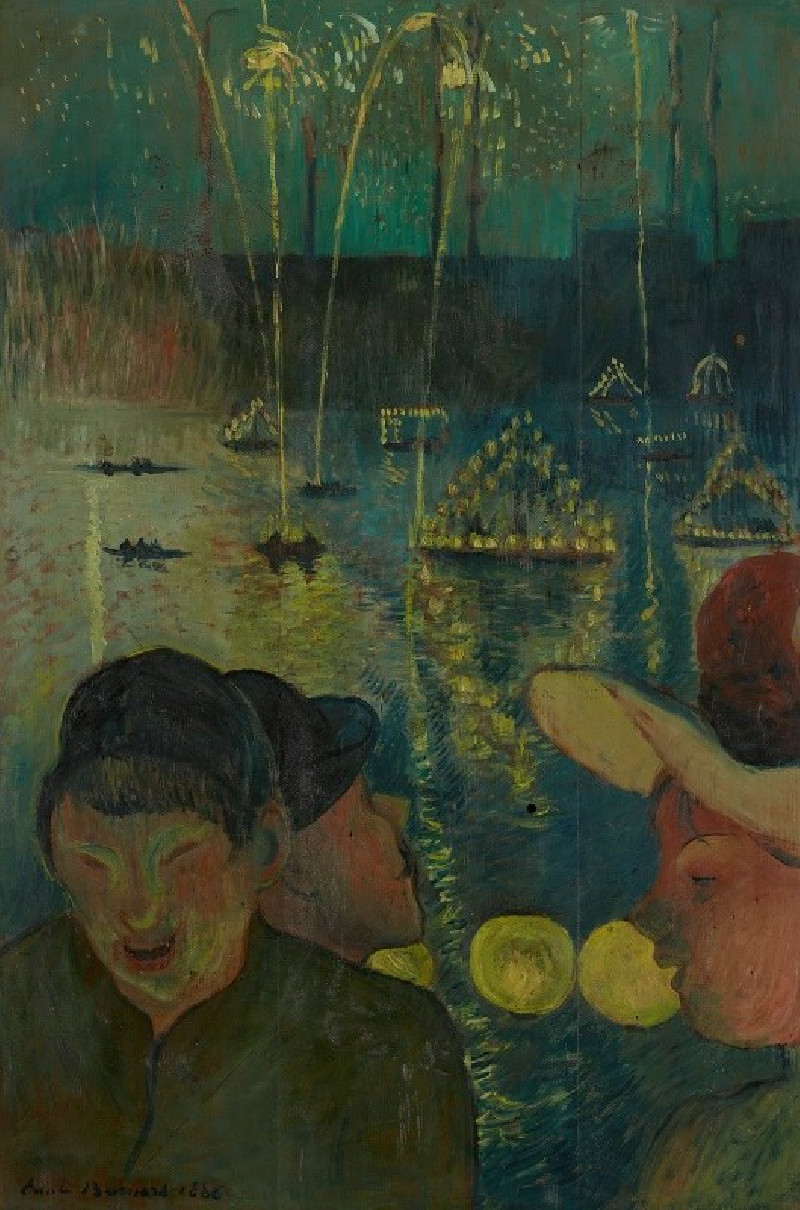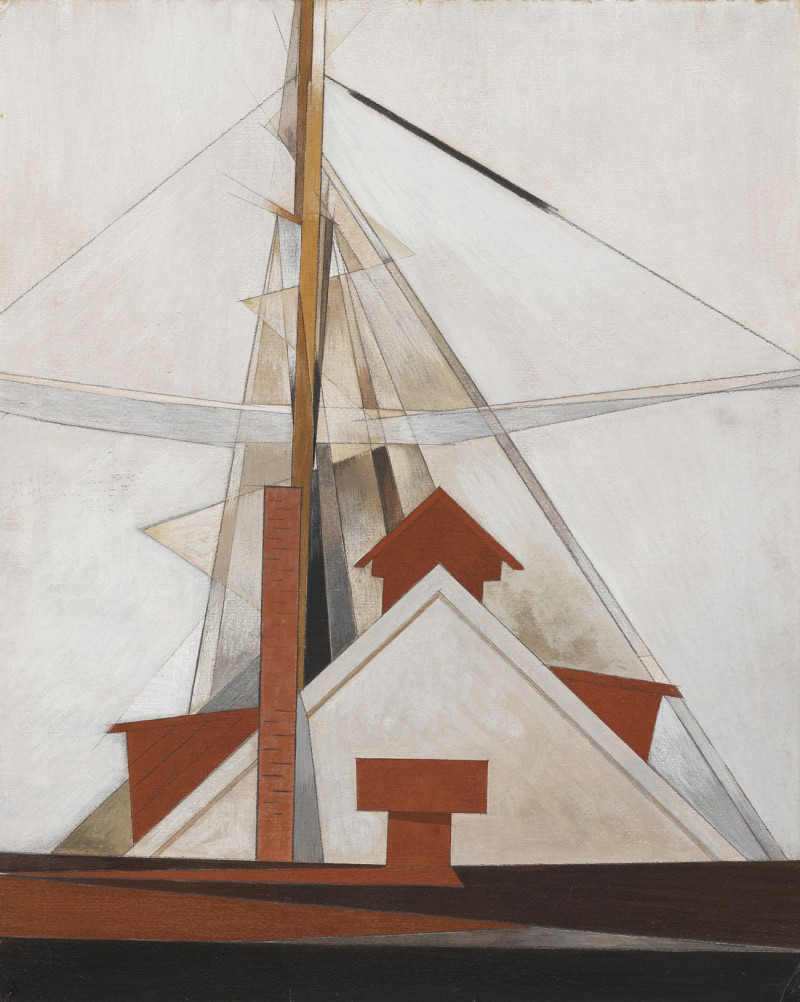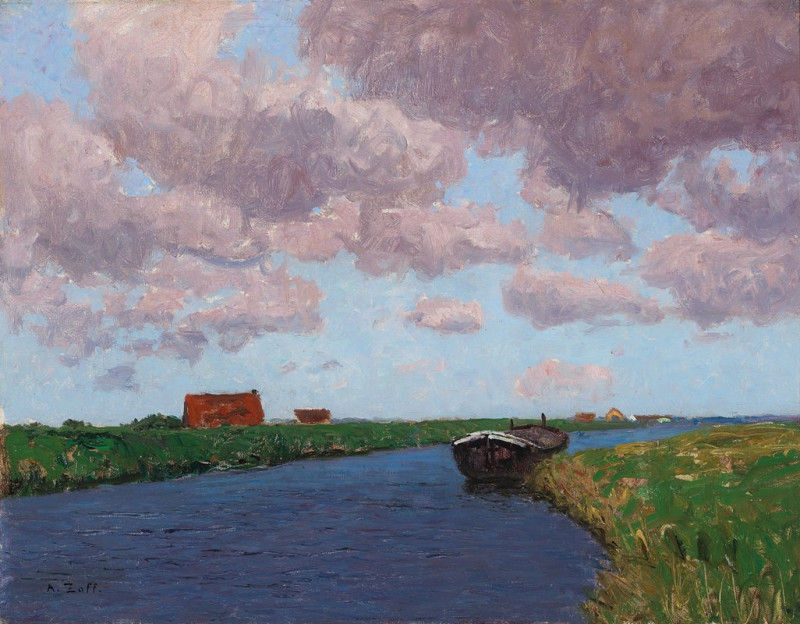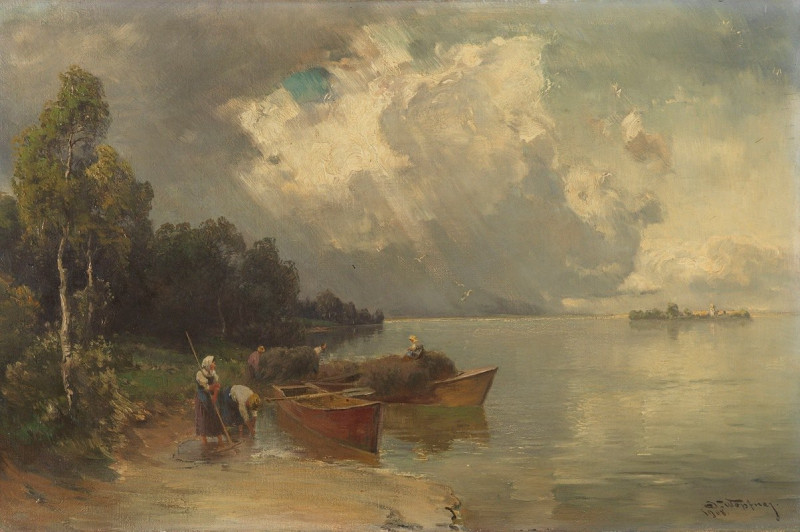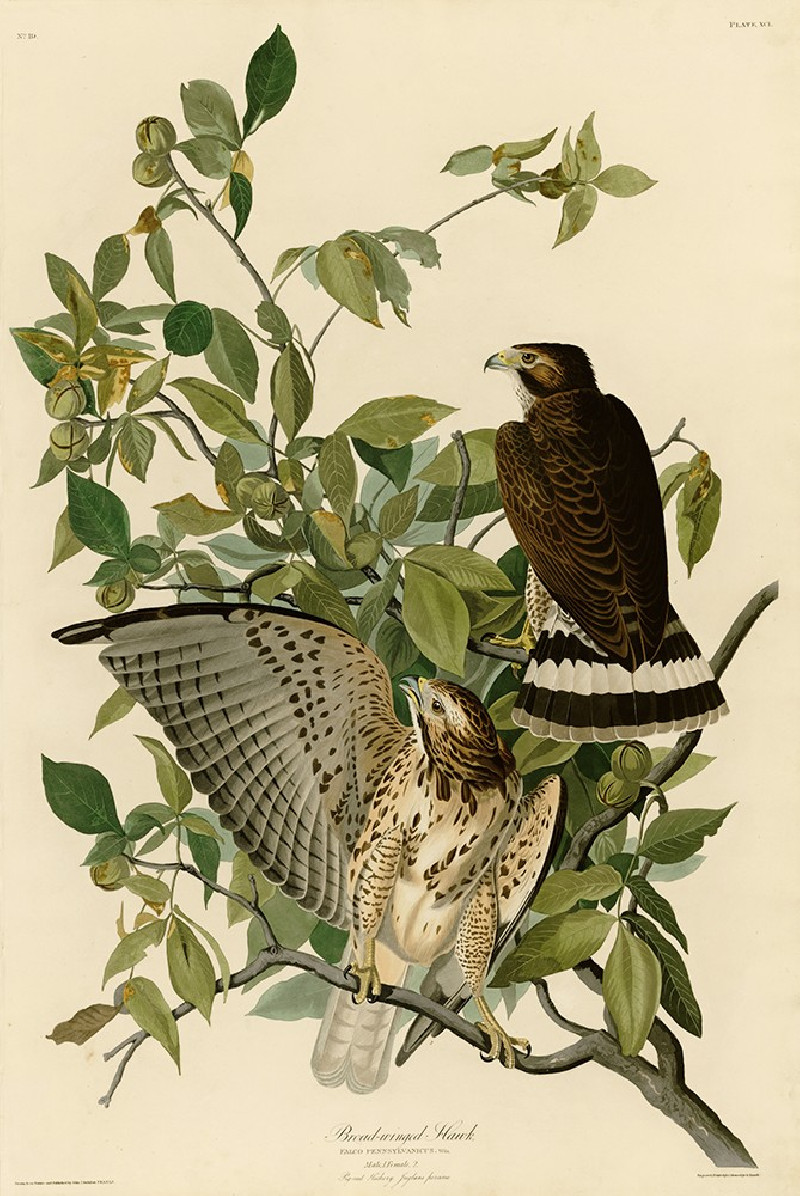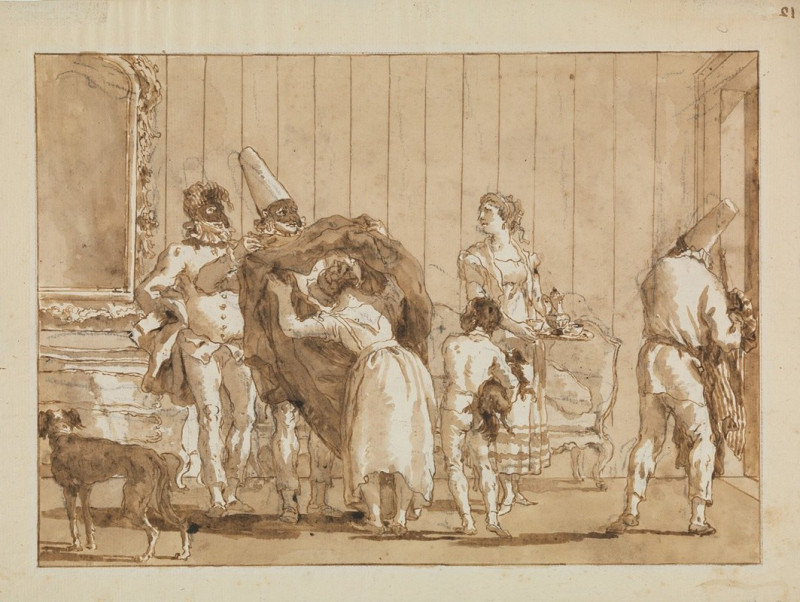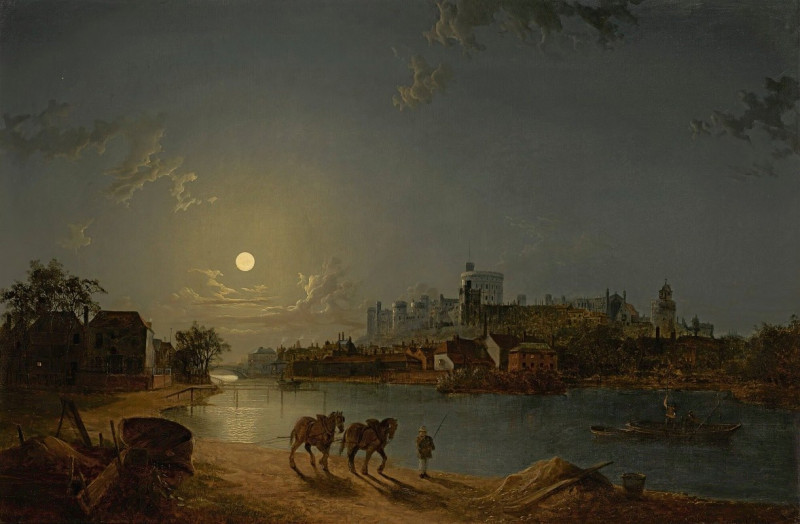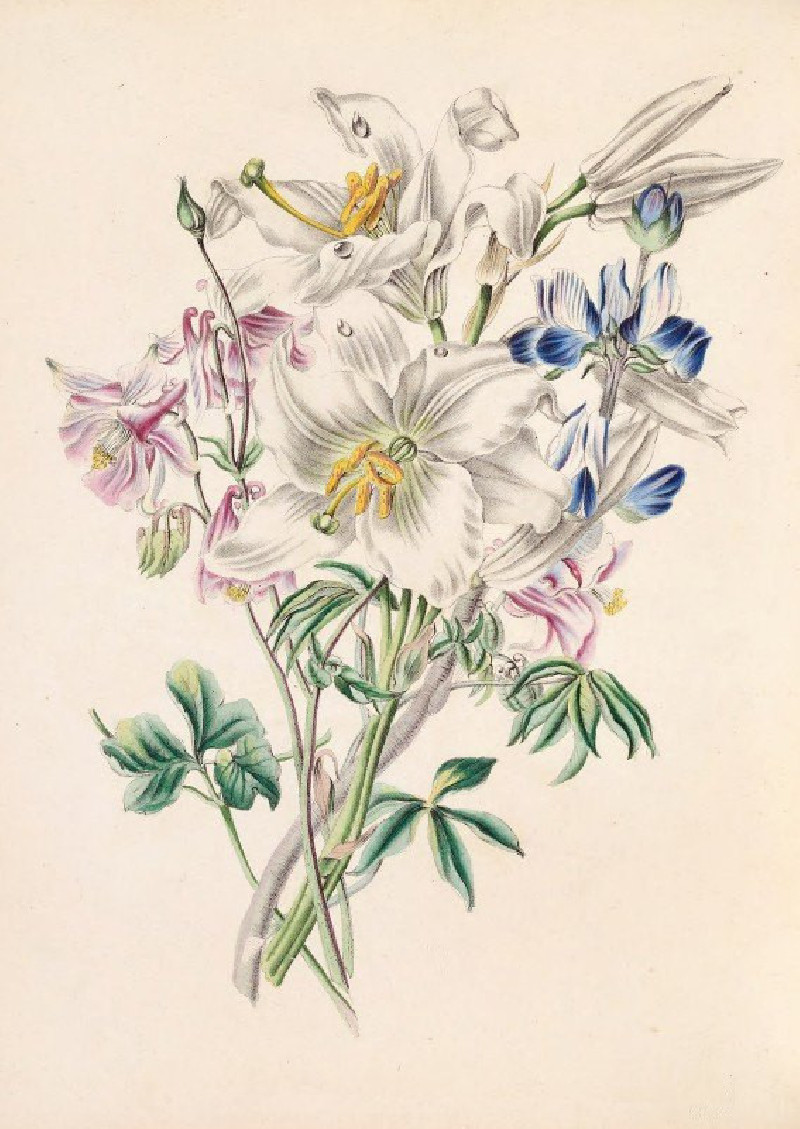Ohne Titel VIII (1942)
Technique: Giclée quality print
Recommended by our customers
More about this artwork
Karl Wiener’s arresting piece, "Ohne Titel VIII," created in 1942, captivates the viewer with its heightened sense of emotion and movement. This painting presents a solitary figure, seemingly in mid-dance or perhaps caught in an act of expressive gesture, set against a vivid and almost dreamlike backdrop of crimson and pink hues. This stark contrast amplifies the sense of drama and isolation of the figure.Dressed in a dark suit that starkly contrasts with the bright background, the figure’s hands are dramatized with yellow highlights, drawing attention to the expression of their movement. The face of the figure gives an impression of looking upwards, possibly indicating a moment of aspiration, despair, or revelation, leaving the interpretation open to the viewer’s perception.The texture and gradient of colors suggest that this artwork might be done in pastels, a medium well suited for blending intense colors and creating soft, yet potent, visual impacts.This piece offers a glimpse into the emotional turmoil and complexity of the era it was created in, invoking a personal and introspective reflection from those who view it.

































